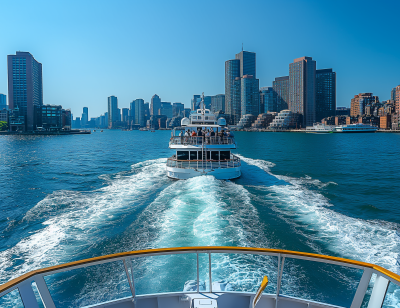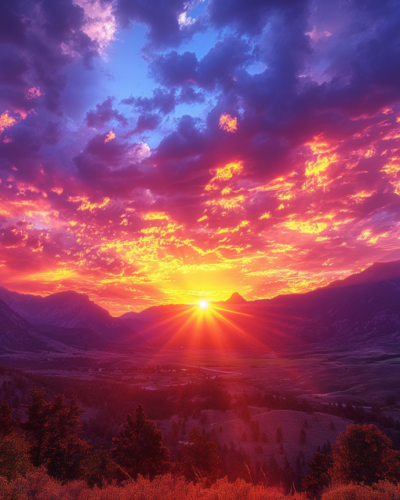Explore the allure of Tristan da Cunha, the world’s most remote inhabited archipelago, in our comprehensive guide. Discover its history, unique culture, natural wonders, and essential travel tips for this British overseas territory.

Welcome to Tristan Da Cunha, an enchanting archipelago nestled in the South Atlantic Ocean. This hidden gem is known as the world’s most remote inhabited island group, boasting breathtaking landscapes, fascinating wildlife, and a rich cultural heritage. Join us on a virtual journey as we unveil the wonders of Tristan Da Cunha.
Unveiling Tristan Da Cunha: An Overview
Located approximately 2,700 miles off the coast of South Africa, Tristan Da Cunha consists of four main volcanic islands: Tristan, Inaccessible, Nightingale, and Gough. Its geological isolation has bestowed upon it a unique ecosystem and a captivating history shaped by volcanic activity.
Let’s dive deeper into its intriguing aspects.
The Geographical Isolation of Tristan Da Cunha
Tristan Da Cunha’s remoteness is both a blessing and a challenge. The archipelago’s geographical isolation has preserved its pristine natural beauty, with rugged coastlines, towering cliffs, and lush green valleys beckoning adventurers. Its untouched landscapes provide a sanctuary for numerous endemic species found nowhere else on Earth.
The isolation of Tristan Da Cunha has also contributed to the development of a distinct cultural identity. With limited outside influence, the islanders have maintained their traditional way of life, deeply rooted in fishing and agriculture. The tight-knit community relies on each other for support. It has developed unique customs and traditions passed down through generations.
Despite its isolation, Tristan Da Cunha has not been completely cut off from the rest of the world. The islanders have embraced modern technology, allowing them to stay connected with the outside world. Internet access and satellite communication have opened up new opportunities for education, trade, and cultural exchange.
The Unique History of Tristan Da Cunha
Tristan Da Cunha holds a storied past that adds to its allure. Discovered in 1506 by Portuguese explorer Tristão da Cunha, the archipelago later became a haven for shipwrecked sailors. The resilient community of Tristan Da Cunha, descended from those early settlers, continues to thrive with a deep sense of pride and resilience.
The volcanic activity that shaped the islands’ landscape has also played a significant role in their history. The eruptions and lava flows have created fertile soil, allowing the islanders to cultivate crops and sustain their livelihoods. However, volcanic eruptions have also posed challenges, forcing temporary evacuations and causing disruptions to daily life.
Over the centuries, explorers, scientists, and even royalty have visited Tristan Da Cunha. Its unique ecosystem and geological features have attracted researchers worldwide, eager to study such rich biodiversity at par with that in Venezuela or the Andes-Amazon region of Ecuador, and volcanic phenomena that matches Erta Ale in Ethiopia. The islanders have welcomed these visitors, sharing their knowledge and experiences and contributing to the scientific understanding of the archipelago.
Tristan Da Cunha’s history is not just limited to its human inhabitants. The islands are home to a diverse array of flora and fauna, many of which are found nowhere else on Earth. From the Tristan albatross, with its impressive wingspan, to the vibrant endemic plant species, the archipelago’s biodiversity is a testament to its isolation and the resilience of its ecosystems.
The Intriguing Wildlife of Tristan Da Cunha
Tristan Da Cunha, a remote archipelago in the South Atlantic Ocean, is a haven for wildlife enthusiasts. This isolated paradise offers a captivating array of flora and fauna that will leave you in awe.
As you explore the untouched landscapes of Tristan Da Cunha, you will be greeted by a symphony of bird songs. This remote archipelago is home to a diverse range of bird species, making it a paradise for birdwatchers. The archipelago is teeming with avian wonders, from the majestic albatross gliding through the skies to the playful rockhopper penguins waddling on the shores. The sight of these feathered beings in their natural habitat is truly mesmerizing.
But Tristan Da Cunha’s wildlife extravaganza doesn’t end with its avian inhabitants. Beneath the crystal-clear waters surrounding the archipelago lies a vibrant underwater realm waiting to be explored. Dive beneath the surface, and you will encounter a mesmerizing world of marine life.
Picture yourself swimming alongside playful dolphins, their sleek bodies effortlessly gliding through the water. Marvel at the vibrant corals, displaying a kaleidoscope of colors that create an underwater tapestry. And if you’re lucky, you might even catch a glimpse of the graceful sea turtles gracefully swimming by. Tristan Da Cunha’s underwater wonders will take your breath away.
The archipelago’s commitment to conservation is evident in its efforts to protect its unique wildlife. The archipelago has implemented strict regulations to ensure the preservation of its delicate ecosystems. By visiting Tristan Da Cunha, you are not only immersing yourself in the beauty of nature but also supporting the conservation efforts that are vital for the survival of these remarkable species.
So, whether you are a bird enthusiast, a marine life lover, or simply someone who appreciates the wonders of nature, Tristan Da Cunha is a destination that will leave you spellbound. Prepare to be captivated by the intriguing wildlife that calls this remote archipelago home.

The Distinctive Culture of Tristan Da Cunha
Beyond its natural splendors, Tristan Da Cunha boasts a rich cultural heritage that reflects the islanders’ way of life.
Tristan Da Cunha, the most remote inhabited archipelago in the world, is not only known for its breathtaking landscapes but also for its distinctive culture. The islanders, known as “Tristanians,” have developed a unique way of life deeply rooted in their language, traditions, and cuisine.
The Language and Traditions
The Tristanians have their unique dialect— a fascinating blend of English with influences from Scottish and Dutch. This linguistic fusion reflects the island’s history and the diverse origins of its inhabitants. The language is not only a means of communication but also a symbol of the islanders’ strong sense of identity and community.
Traditions play a significant role in the daily lives of the Tristanians. From festive celebrations to religious ceremonies, the islanders have preserved age-old customs passed down through generations. These traditions are a testament to the island’s rich cultural heritage and serve as a reminder of the resilience and unity of its people.
The warm hospitality of the Tristanians creates a welcoming atmosphere for visitors, allowing them to experience the local way of life first-hand. Whether it’s joining in traditional dances, participating in local festivals, or simply engaging in friendly conversations, visitors are sure to be captivated by the genuine warmth and friendliness of the islanders.
The Local Cuisine and Specialties
Tristan Da Cunha’s cuisine is a true delight for food lovers. The island’s isolation has led to the development of a unique culinary tradition that revolves around the abundant seafood and fresh produce grown on the island.
Seafood takes center stage in Tristanian cuisine, with locally caught lobster being a particular delicacy. The island’s pristine waters teem with a variety of fish, which are expertly prepared into delectable dishes that showcase the flavors of the sea. From grilled fish to fish stews, visitors can indulge in a true seafood extravaganza.
Aside from seafood, the famous Tristan da Cunha potato is another culinary highlight. Renowned for its exceptional taste, this potato variety thrives in the island’s fertile volcanic soil, resulting in a unique flavor and texture. Whether mashed, roasted, or used in traditional dishes, the Tristan da Cunha potato adds a distinct touch to every meal.
Exploring the local cuisine is a gastronomic adventure and an opportunity to connect with the island’s culture. The Tristanians take pride in their culinary heritage and are always eager to share their traditional recipes and cooking techniques with visitors.
Living in Tristan Da Cunha: The Human Aspect
While Tristan Da Cunha may seem like an idyllic paradise, life on this remote archipelago comes with its own set of challenges and rewards.
Living in isolation presents unique hurdles, including limited access to resources and medical care. However, the close-knit community, breathtaking natural surroundings, and unparalleled tranquility make every sacrifice worthwhile for the islanders who call the archipelago home.
Tristan Da Cunha’s economy primarily relies on fishing and agriculture. The islanders’ harmonious coexistence with nature allows them to sustainably harvest resources while preserving the delicate ecological balance. This intimate relationship with the environment is a testament to their commitment to conservation.
Exploring Tristan Da Cunha: Travel and Tourism
For intrepid travelers seeking extraordinary experiences, Tristan Da Cunha offers a wealth of opportunities to immerse oneself in its wonders.
Getting There: The Journey to Tristan Da Cunha
Reaching the remote archipelago is an adventure in itself. The island can be accessed by a small number of adventurous travelers who embark on an arduous journey, as the island can only be accessed via sea voyage, usually between Cape Town and Tristan, as there is no airship on the island. However, those who make the effort are rewarded with an unparalleled experience like no other.

Immerse Yourself in the Tristan Da Cunha Lifestyle
Once on the island, many awe-inspiring sights and activities are always promised. From hiking through craggy cliffs to exploring hidden coves, Tristan Da Cunha delivers unique and unforgettable experiences at every turn. Be sure to connect with the locals for insider tips on the best-kept secrets of the archipelago.
As we wrap up your virtual tour of Tristan Da Cunha, this glimpse into its breathtaking landscapes, intriguing wildlife, distinctive culture, and the resilient spirit of its inhabitants has inspired you to embark on your own extraordinary adventure to this remarkable archipelago. So plan your journey to Tristan Da Cunha and discover the world’s most remote archipelago for yourself.












